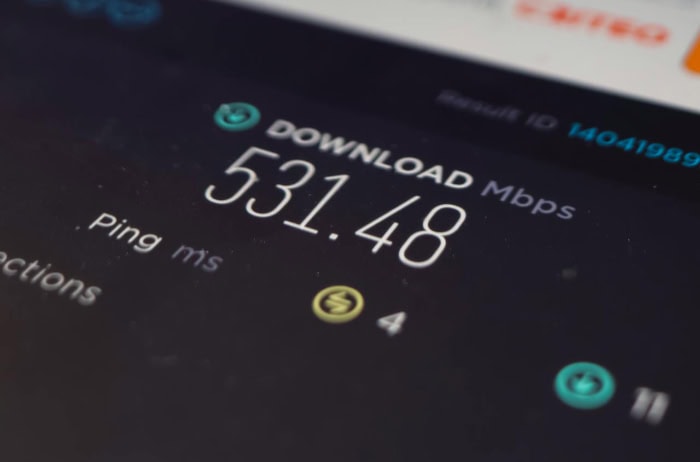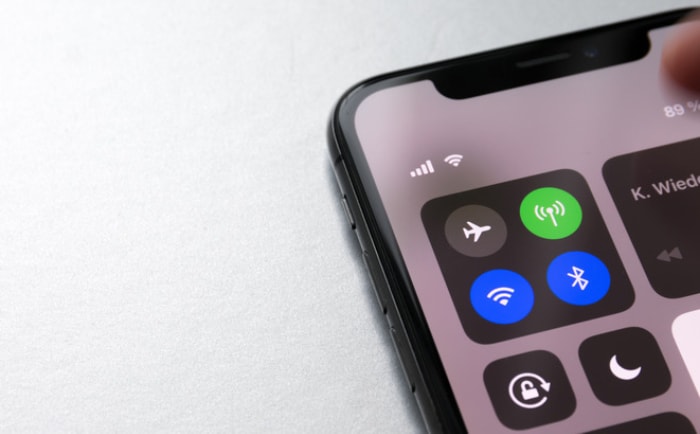Is 500 Mbps Fast? Let’s Settle the Debate

Choosing an internet plan often feels like deciphering a secret code, with terms like ‘500 Mbps’ thrown around as the solution to all your buffering woes. But what does that number actually mean for your daily life? The answer is not a simple yes or no; it depends entirely on your household’s unique habits.
How many people are streaming 4K movies, battling in online games, or joining video calls for work at the same time?
Understanding 500 Mbps
When an internet provider advertises a speed like 500 Mbps, they are describing more than just how quickly you can download a file. Several distinct factors combine to create the experience you perceive as fast or slow. Breaking down these components helps clarify what you are actually paying for and what performance you can expect.
Defining Internet Speed Metrics
Your internet connection’s performance is shaped by a few related measurements that work together. The advertised speed of 500 Mbps, or megabits per second, refers to bandwidth.
Think of bandwidth as the size of a highway; it represents the maximum amount of data that can travel to you at once. Throughput is the actual amount of data successfully moving through that connection at a given moment, which can be affected by network congestion.
Finally, latency, often called ping, is the delay it takes for a signal to travel from your device to a server and back. A connection with high bandwidth but high latency can still feel sluggish, especially during activities like online gaming or video calls where immediate responsiveness is critical.
Download Speed vs. Upload Speed
The advertised number on an internet plan almost always refers to the download speed. This is the rate at which your devices pull data from the internet, which governs activities like streaming movies, loading websites, and downloading files.
Upload speed, conversely, is the rate at which you send data from your devices out to the internet. This is important for video conferencing, posting large files to social media, or backing up data to the cloud.
On many internet plans, especially those using cable technology, the upload speed is significantly lower than the download speed.
Ideal Speed vs. Real-World Performance
Achieving the full 500 Mbps on a single device is often unlikely due to several external factors. Your final speed is only as fast as the weakest link in the chain.
Your router’s capabilities, its placement in your home, and interference from other electronics can limit Wi-Fi performance. The age and processing power of your computer or smartphone also play a role, as older hardware may not be able to handle such high speeds.
Furthermore, the servers you are connecting to may have their own speed caps, and general network congestion in your area during peak hours can reduce your connection's throughput.
What a 500 Mbps Connection Supports

A 500 Mbps internet plan provides substantial capacity for the demands of a modern, connected household. This level of bandwidth can comfortably handle numerous high-demand activities at the same time, ensuring a smooth experience for everyone without the frustration of buffering or lag.
It is a powerful option for homes where entertainment, gaming, and remote work all compete for a stable connection.
Streaming Movies and TV
For households that rely on streaming services for entertainment, a 500 Mbps connection offers more than enough power. A single 4K Ultra HD stream typically requires around 25 Mbps to run smoothly.
With 500 Mbps, your home can support multiple 4K streams on different televisions and devices simultaneously. This abundant bandwidth means one person can watch a movie in the living room while others watch their own shows in different rooms, all without compromising video quality or causing buffering interruptions.
Online Gaming and Downloads
A 500 Mbps plan is excellent for gamers. While online gameplay itself does not consume a lot of bandwidth, the ample headroom ensures that other internet usage in the house, like a large download or a 4K stream, will not cause frustrating lag spikes during a competitive match.
More importantly, this speed drastically reduces the time it takes to download new games and large updates. Modern games can exceed 100 GB in size, and a fast connection means you can start playing in a fraction of the time it would take on a slower plan.
Remote Work and Productivity
In a home with multiple people working or learning remotely, a 500 Mbps connection creates a stable and efficient environment. It easily handles several high-quality video conference calls happening at once, so your connection remains clear and professional.
The speed also accelerates productivity tasks like uploading large project files, syncing with cloud storage services, and remotely accessing a corporate network. This ensures that work is not interrupted by a slow or unreliable internet connection, even when the network is busy.
Who Needs a 500 Mbps Plan?
Determining the right internet speed is a balancing act between your household's demands, your budget, and your desire for a frustration-free online experience. While a 500 Mbps plan offers significant power, it is most suitable for specific types of users and homes.
Identifying your own usage patterns is the best way to decide if this tier is the right investment for you.
Household Size and Device Count
A 500 Mbps connection is an excellent fit for medium to large households with several active internet users. If your home has three or more people who are frequently online at the same time, this speed can prevent network slowdowns.
Beyond just the number of people, consider the number of connected devices. In addition to computers and phones, modern homes often have smart TVs, security cameras, digital assistants, and gaming consoles all consuming bandwidth simultaneously.
A 500 Mbps plan provides the capacity to handle this cumulative demand without compromising performance for anyone.
Choosing the Right Tier
To know if 500 Mbps is the correct choice, it helps to compare it to the plans above and below it. A 300 Mbps plan may be perfectly adequate for smaller families or those with more modest internet habits.
However, it might strain during peak usage hours when multiple people are streaming in 4K or downloading large files. On the other end, a 1 Gbps (1,000 Mbps) plan offers immense capacity, which is often more than most families need.
The gigabit option is best for very large, tech-heavy households or users who want maximum performance for activities like professional live streaming. A 500 Mbps plan often hits the sweet spot, providing plenty of headroom for current needs and some future growth.
Estimating Your Bandwidth Needs
If you are unsure about your requirements, you can get a more concrete recommendation by using an online speed calculator. These tools allow you to input information about your household, including the number of users and the types of activities you regularly perform.
By tallying the estimated bandwidth for simultaneous 4K streaming, online gaming, and video calls, the calculator can provide a target speed. This data-driven approach can help translate your family's lifestyle into a specific Mbps figure, giving you more confidence in your choice.
The Importance of Upload Speed and Symmetry

While the flashy download number gets most of the attention, your internet plan's upload speed is an equally vital component that is often overlooked. Your online experience is a two-way street, requiring you to both receive and send data.
For many modern activities, from working from home to sharing content online, a robust upload speed is not just a luxury; it is a necessity for a smooth and productive connection.
Why Upload Speeds Matter
Upload speeds directly affect any activity that involves sending information from your devices to the internet. If you frequently participate in video calls, a strong upload connection ensures your video and audio remain clear and stable for others.
For content creators or live streamers, upload speed is the backbone of their work, determining the quality of their broadcast. Even common tasks like backing up your computer to a cloud service, sending large email attachments, or posting high-resolution photos and videos to social media depend on a capable uplink.
A slow upload speed can turn these tasks into a frustrating waiting game.
The Caveat of Asymmetrical Connections
Many internet plans, particularly those delivered over cable networks, are asymmetrical. This means the upload speed is only a small fraction of the advertised download speed.
For instance, a plan offering 500 Mbps for downloads might provide only 20 Mbps for uploads. For users who primarily consume content by streaming and browsing, this difference may not be noticeable.
However, for remote workers, content creators, or anyone frequently sending large files, this bottleneck can severely hinder productivity and performance. It is a critical detail to check before committing to a plan.
The Advantage of Symmetric Fiber
In contrast to asymmetrical plans, symmetric connections offer upload speeds that are identical to their download speeds. This feature is a primary benefit of internet plans delivered over a fiber optic network.
A symmetric 500 Mbps fiber plan provides both a 500 Mbps download and a 500 Mbps upload speed. You should prioritize a symmetric plan if your internet usage involves a heavy mix of uploading and downloading.
It is the ideal choice for households with serious gamers, live streamers, professional video editors sending large files, or multiple people working from home who rely on stable video conferencing.
Real-World Factors That Affect Speed
Subscribing to a 500 Mbps plan is only the first step; achieving that speed on your devices depends on a chain of other components working correctly. The number your provider advertises represents the speed delivered to your home, but various bottlenecks can reduce the performance you actually experience.
Ensuring Your Equipment is Ready
Your home network hardware plays a critical role in distributing speed to your devices. Your Wi-Fi router must be capable of handling 500 Mbps speeds.
An older router using outdated standards may struggle to deliver even half of that, especially over Wi-Fi. For best results, a modern router that supports at least the Wi-Fi 5 (802.11ac) standard is recommended, with Wi-Fi 6 (802.11ax) being even better.
The placement of your router also matters significantly. Walls, furniture, and distance can weaken the signal.
For maximum performance, especially for stationary devices like a desktop computer or gaming console, a direct wired connection using an Ethernet cable is the most reliable way to get the full speed you pay for.
External Factors Beyond Your Control
Even with a perfect home setup, your speed can be limited by factors outside your home. The broader internet network can experience congestion, much like traffic on a highway during rush hour.
If many people in your area are using their connections heavily at the same time, you may notice a dip in performance. Furthermore, the servers you are connecting to have their own speed limitations.
You cannot download a file from a website any faster than its server can send it to you. If a gaming service or streaming platform is experiencing high traffic, your connection to it may be slower, regardless of your 500 Mbps plan.
How to Verify and Optimize Your Speed
Before upgrading your plan or buying new equipment, it is a good idea to verify the speeds you are currently getting. You can run an online speed test to measure your connection's performance.
For the most accurate reading of the service coming into your home, run the test on a computer connected directly to your router with an Ethernet cable. If that result is close to your plan's advertised speed, but your Wi-Fi devices are much slower, the issue likely lies within your home network.
You can then take steps to optimize your Wi-Fi by moving your router to a more central location or adjusting its wireless channels.
Conclusion
For the majority of modern households, a 500 Mbps internet connection is indeed very fast. It provides enough bandwidth to comfortably support a family's simultaneous demands, from multiple 4K movie streams to lag-free online gaming and stable video calls for remote work.
However, unlocking this performance requires more than just the plan itself; it depends on having a capable router and, for certain users, an adequate upload speed. The final decision rests on your specific circumstances.
Consider your busiest internet usage hours, count the number of connected devices, and evaluate if your activities require the balanced performance of a symmetric connection. By comparing a 500 Mbps plan against lower and higher tiers, you can confidently select the speed that offers the best value for your home without paying for unnecessary overhead or settling for a plan that causes frustration.


